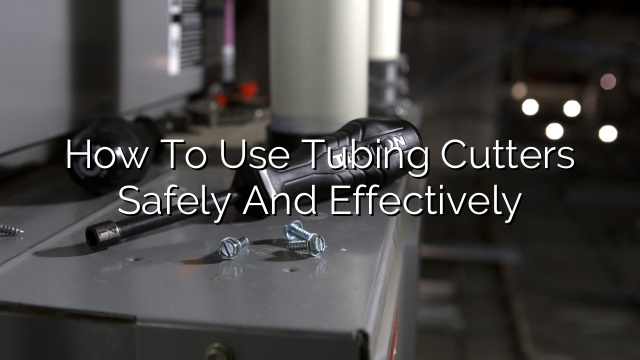Introduction to Sheet Metal Work in HVAC
Sheet metal work is an integral part of HVAC (Heating, Ventilation, and Air Conditioning) installations and repairs. Mastering the art of cutting, shaping, and assembling sheet metal allows for the creation of ductwork, vents, and other components vital for a functioning HVAC system. Professionals in the field rely on a set of essential tools that are designed specifically for the unique demands of working with sheet metal.
Understanding the Basics of Sheet Metal Tools
Before diving into the specific tools used for HVAC sheet metal work, it’s important to understand that quality and precision are paramount when selecting equipment. Proper hand tools, power tools, and accessories not only make the job easier but also ensure that the final installation is efficient, safe, and up to code.
Essential Hand Tools for Sheet Metal Work
Hand tools are the bread and butter of any HVAC technician when it comes to cutting and shaping sheet metal. The following tools should be part of any HVAC technician’s toolkit.
- Snips: The primary cutting tool for sheet metal, snips come in various shapes and sizes including tin snips, aviation snips, and compound snips, each designed for different types of cuts.
- Seamers: Seamers are designed to bend, flatten, or crimp sheet metal, allowing for strong seams and corners. Hand seamers provide control for precision work.
- Folding bars: Also known as folding tools or hand brakes, these are used to make long, uniform bends in sheet metal. Folding bars come in varying lengths to accommodate different projects.
- Hammers: A sheet metal hammer, like a straight peen hammer, is necessary for making adjustments and ensuring proper fit.
Choosing the Right Snips
Selecting the right snip involves understanding the job at hand. For straight cuts, use straight-cutting snips. For curves and complex shapes, opt for left-cutting or right-cutting snips based on the direction of the cut.
Seamers and Their Significance
Seamers come into play when making precise folds or crimps. Quality seamers have durable construction and comfortable grips, which is crucial for extended periods of use.
Power Tools and Equipment for Efficiency
In addition to hand tools, power tools can significantly improve the efficiency of HVAC sheet metal work. They are ideal for larger jobs or those requiring repetitive cuts or bends.
- Nibblers: Electric or pneumatic nibblers are power tools that can make fast, straight, or curved cuts in sheet metal without distortion.
- Shears: Power shears provide the ability to cut large pieces of sheet metal quickly and with less effort compared to snips.
- Benders: For creating precise bends in sheet metal, a power bender or brake can save time and reduce physical strain on larger projects.
- Notchers: Notchers are used to create clean cuts or ‘notches’ in sheet metal, which are essential for fitting pieces together seamlessly.
Advantages of Using Power Tools
Power tools can handle thicker sheet metal and are designed for high-volume work. Battery-operated models allow for portability, and pneumatic options offer consistent power for heavy-duty jobs.
Measurement and Marking Tools
Precision begins with accurate measurement and marking. The right tools in this category ensure cuts and bends are made in the correct location.
- Tape Measure: A high-quality tape measure is essential for taking accurate measurements of sheet metal.
- Straightedges: A long straightedge guides snips and shears to ensure straight cuts.
- Awls: Sharp awls are used for pinpointing exact locations for drills or screws in sheet metal.
- Scribes: Scribing tools help in marking sheet metal before cutting, ensuring precision in the work.
Ensuring Accuracy with the Right Measurement Tools
Every measurement and mark must be spot-on to avoid costly mistakes. Tools like combination squares and calipers can also aid in achieving the exactness required for professional HVAC work.
Safety Equipment for Sheet Metal Workers
Safety should never be overlooked when working with sheet metal, as the material can have sharp edges and the work can involve heavy lifting and potentially dangerous equipment.
- Gloves: Heavy-duty gloves protect hands from cuts and punctures.
- Goggles: Safety goggles shield the eyes from flying debris.
- Ear Protection: When using power tools, ear protection is important to guard against long-term hearing damage.
- Respirators: For certain jobs, wearing a respirator can prevent inhalation of harmful dust and particles.
Adhering to Safety Protocols
Using safety gear correctly and consistently helps protect against accidents and injuries. Always perform equipment checks and maintain a tidy workspace to mitigate risks.
Advances in Cutting and Shaping Technologies
With technological advancements, new tools are constantly emerging to enhance sheet metal work. Products like laser cutters, plasma cutters, and high-precision CNC machines are reshaping the industry, offering speed and unimaginable precision. However, they require specialized training and are more commonly found in large scale or industrial settings.
FAQs
What are the most important hand tools for HVAC sheet metal work?
Snips, seamers, folding bars, and hammers are among the most crucial hand tools for anyone working with sheet metal in the HVAC industry.
Why are safety measures so important in sheet metal work?
Sheet metal can be very sharp and the work often involves potentially dangerous tools. Proper safety equipment and precautions help prevent injuries.
Can I use the same tools for residential and commercial HVAC work?
While many tools overlap, commercial HVAC work sometimes requires heavier-duty equipment due to the larger size and thickness of sheet metal used.
How do power tools benefit HVAC technicians?
Power tools increase efficiency and can reduce physical strain by allowing technicians to perform repetitive tasks or work with thicker metal more easily.
What are the latest technologies in sheet metal cutting and shaping?
Advanced technologies like laser cutters, plasma cutters, and CNC machines offer high precision and speed, but they also require special training and are typically used in larger-scale operations.














